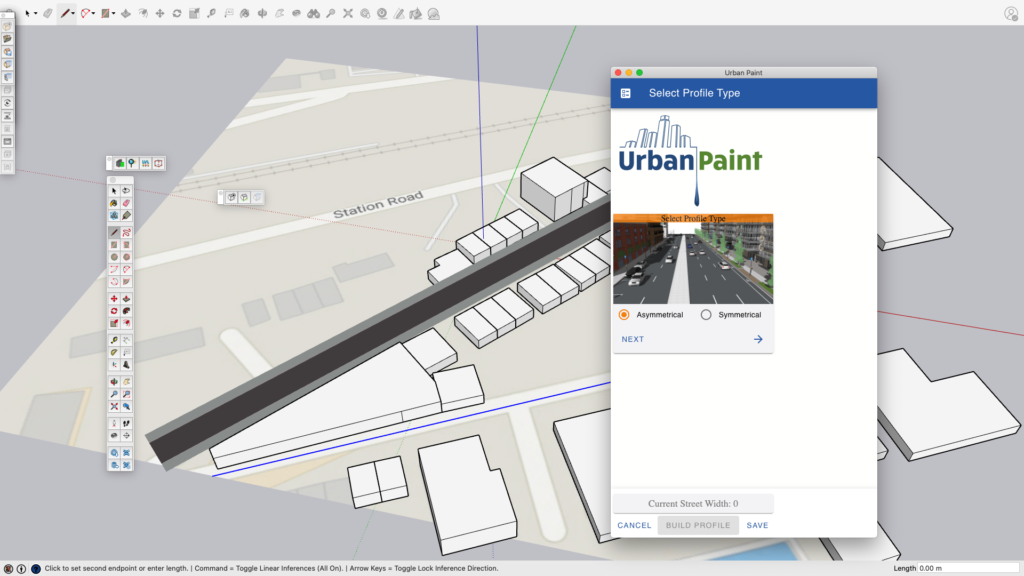
Urban Paint is a commercial plug-in for SketchUp that makes adding roads, buildings and urban furniture to SketchUp models easier. I purchased this while creating a model of Daily Plaza to optimize and speed up the process. The software allows users to select configurations of road layouts with a high level of granularity and then apply them to existing models.
Feelings
While I was initially optimistic about Urban Paint’s potential to expedite the model creation process, I soon realised that its utility could be enhanced. It may prove beneficial in architectural scenarios, but it might not be the ideal choice for journalistic purposes. The primary issue is the formulaic nature of the road layouts it generates, a point I will delve into in the evaluation section. Despite the rapid production of road layouts, the results lacked complete authenticity. I will discuss the various challenges in the evaluation section. The most significant problem was the software’s focus on US-style layouts. Although it’s possible to select European-style curbs and furniture, they don’t align well with UK situations.
Evaluation
I used the software to rapidly prototype road layouts in a series of models I created using GIS data. These included models of local streets and regional areas, and also my model of St George’s Square in Huddersfield (part of a specific side project). Aside from the American focus of those layouts, there were no appreciable customization options regarding colour, road markings, or types of roadside furniture. For example, there were no UK models built in for manhole covers, water covers, telecommunications cabinets, and so on. A localised UK version of the software would be required to have any utility for immersive journalism production from a British and United Kingdom perspective.
Application
Although my reflection describes huge limitations, the software’s performance is impressive when used correctly. When used to develop the Dealey Plaza model, I could rapidly prototype street layouts without having to manually draw them myself and combine them with photogrammetry. However, I also ran into a further authenticity problem. The lack of customisation meant that I could not develop street layouts contemporary to the 1960s.
Conclusions
Overall, Urban Paint is a near miss. It’s not yet suitable as software to facilitate the rapid development of immersive journalism content if we aim to preserve the authenticity of the spaces we create. The basic elements are all present, but the software lacks localization options and temporal customisation. These features are crucial for building models that truly reflect their location and time.